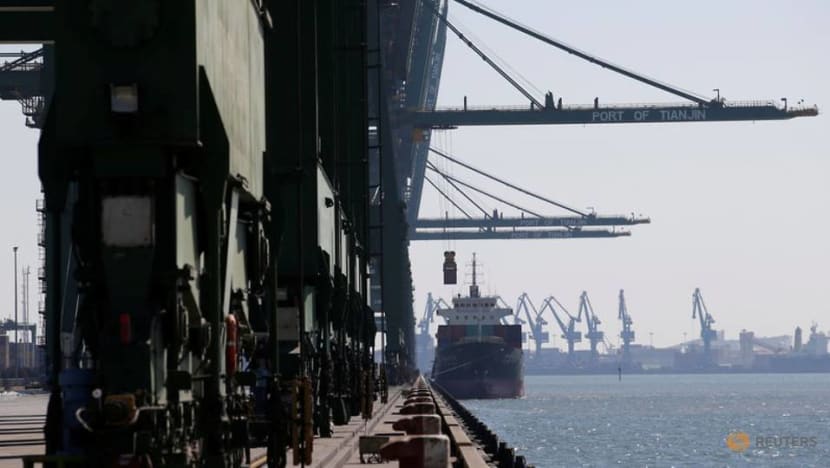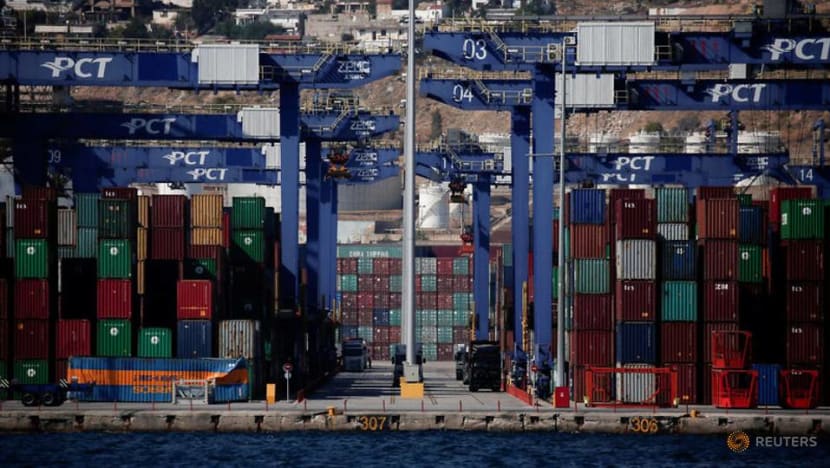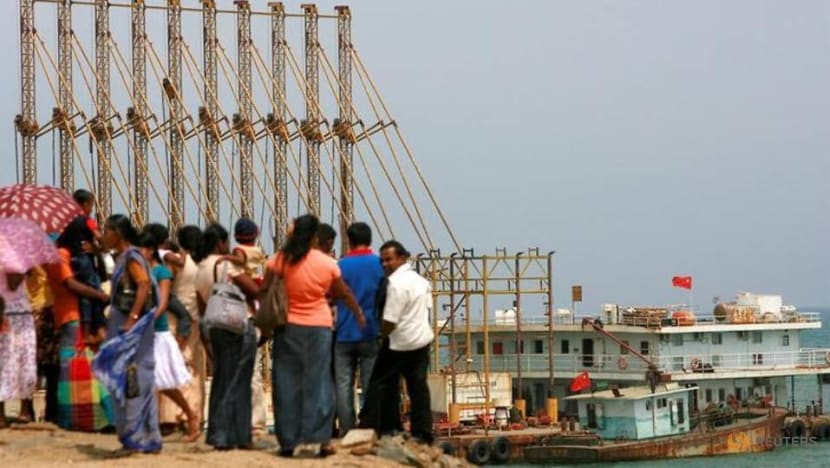commentary Commentary
Commentary: An Italian port dreams of being the Singapore of the Adriatic Sea, as it awakens to China’s siren call
The port of Trieste is home to only 200,000 but its strategic location is why Chinese investors are upbeat about its prospects as a key Belt and Road node, says business consultant Andre Wheeler.

Trieste represents an immediate maritime window to the industrial regions of Poland, Slovenia and the Czech Republic. (AFP/Alberto PIZZOLI)
SINGAPORE: Nestled in the embrace of the Adriatic Sea, near the border where Italy meets Croatia and Slovenia lies Trieste, a reawakened town of 200,000 people.
A frontier city, Trieste has come under various administrations in its over 2,000 year history – and had been a small port under the Austrian-Hungary port at one point, occupied by Napoleonic France, and even for a short period, an independent city-state.
This once-slumbering port has now been re-awakened, under the watchful eye and influence of a much more far-flung power: China.
STRATEGIC ADVANTAGE
Trieste is well-positioned to enhance China’s trade and economic engagement of the Suez, Mediterranean, Central-Eastern Europe and the new Arctic Route. These advantages include its 18 to 20 m water depth, legal status as an international free port as well as its position at the most northern part of the Adriatic Sea.
Its strategic situation sitting astride the Baltic-Adriatic trade corridor, home to one of the most important trans-European road and railway axes in central Europe, and its maritime links to the key Baltic seaports of Gdansk, Gdynia, Szczecin and Swinoujscie in the north, and the Adriatic ports of Koper, Trieste, Venice and Ravenna in the south, has made it a valuable entry point into Europe and an attractive key node for China’s Belt and Road Initiative.
READ: Belt Road Initiative a vision of a new global economic order, win-win collaboration, a commentary
With 61 terminals that connect eight sea ports, the Baltic-Adriatic rail freight corridor is one of Central Europe’s most valuable trade lifelines.
Trieste also represents an immediate maritime window to the industrial regions of Poland, Slovenia and the Czech Republic.
EARLY FRUITS
Trieste is still very early in its development journey and many years will pass before it fully reaps the fruits of becoming a metropolis under the Belt and Road.
But since its first engagement with China in 2016, Trieste has doubled its container traffic as it worked to capture some of the 70 per cent of sea trade that passes between Europe and China - a dramatic jump in the total cargo movement of 486,000 TEU to 730,000 TEU in 2018, which have been fuelled by a doubling of trains operating on those tracks.

Nearby rival Slovenian port of Koper is also reaping benefits form increased trade from China and has moved 900,000 TEU in 2018, indicative of potential upside to Triete’s further development, for a city known to have received more than 2 million coffee sacks each year, of which almost a fifth goes to warehouses owned by Illy’s to be roasted and re-exported.
The growing coffee trade in Trieste highlights a shift in this region traditionally being driven by maritime crude oil imports that travels by pipeline to Germany, an amount that meets 30 per cent of the energy needs of Germany.
BELT AND ROAD CAN RESHAPE TRIESTE
The corridor will benefit from Belt and Road investment and greater political will to build two missing links at the alpine crossing between Gloggnitz and Muerzzuschlag in Austria that runs through the Semmering Base Tunnel and along the Koralm Railway line.
Not only will this reduce the traveling distance and time between the towns, the lower slope gradient means that only one locomotive is needed instead of the two required along the old route.
It also opens up bottlenecks on six railways and two road cross-border sections as they await compliance with Trans-European Transport Network requirements in terms of connecting Europe.
The network aims to close gaps and eliminate technical barriers that exist between the transport networks of EU countries, and contribute to the creation of a single European transport area. Trieste would need to comply with imposed standards in order to fully participate within the EU.
While the corridor offers much promise, it requires funding, estimated at US$800 billion to be fully functional.
There are a number of gaps to realising this seamless freight movement and travel, but important to Trieste are gaps within the rail network associated with track electrification, gauge and line speed design as well as poor port-to-rail network connectivity.
A FREE PORT INTO EUROPE
Italy has openly marketed Trieste’s location and position to China, particularly their international free port status that allows public concessions over the main free port areas.
There are numerous customs and tax incentives with five Free Zones regulated by the International Peace Treaty of 1947, of which Trieste is one.
These zones are a unique feature in the European legal system, giving advantages to goods in transit to be stored or processed. Goods arriving from non-EU countries, for example, can be unloaded and stored without time limits or customs duties, VAT and other import charges until such goods cross the borders of the free port to be imported into EU countries.

READ: Global shipping and logistics chains reshaped as China’s Belt and Road dreams take off, a commentary
Furthermore, all kinds of goods, both EU and non-EU, may be stored indefinitely, the customs origin of goods can be retained, and the free port can be home to any kind of industry, trade or ancillary activities.
In order to facilitate this, Trieste is in the process of seeking US$1.3 billion so that road and rail access to containers can be made more efficient.
Plans for the building of a large quayside, a railway terminal, container deposit areas and a free zone that can be used for warehousing and goods assembly are in the works if agreements are inked, anticipated when Chinese President Xi Jinping heads to Italy in March.
For now, China is looking to cover half the cost with the balance coming through countries such as Kazakhstan, Azerbaijan, Turkey, Iran and Malaysia. It is interesting that Italy is the first G7 country to sign an MOU within the BRI framework.
For Italy, partnership with China to share developmental costs and bring in freight volume can help accelerate these networks through Trieste, which also sees competition heating up for Chinese investments from other cities such as Greece’s port of Piraeus, even though the latter does not have easy reach of European markets by rail.
CLOUDS ON THE HORIZON
While prospects for joint cooperation and growth between Italy and China in Trieste have been bright, fears of predatory financing continue to stew ever since China took hold of a majority share in Hambantota port after the Sri Lanka government was unable to meet its debt commitments.
For this reason, the Italians have been careful to frame Trieste as one port in a series that can offer China a logistics platform for Central, South Europe and North Africa and encouraged partnership and investment in infrastructure that offers access to the sea and by land – and not as a singular Italian node in the BRI.

Segments of the Italian public fear crippling debt that will give China almost complete control of the international free port of Trieste, and inadvertently, a bridgehead for both economic and strategic domination of Europe.
In fact, the EU has raised similar security concerns with Italy and has proposed a screening mechanism for security-sensitive industrial sectors. Raised in the EU-Italy discussions is a proposal to restrict Chinese ownership to minority shareholdings as well as the retention of security control over key assets including piers, wharfs and equipment.
READ: The problem with the Eurozone? Shared responsibility is no responsibility, a commentary
There is a significant amount of smoke and mirrors with the port of Trieste, but what is clear is that Italy wants to participate as an important component of the BRI. While still early, participation in the BRI will certainly bring a number of benefits to Trieste’s development and return the city to its historic glory as an industrial and commercial hub.
Organisations in Trieste that I have spoken to see the potential of a win–win situation should the status of Trieste and the provisions established by the Peace Treaty of 1947, are fully safeguarded, as Trieste opens up to opportunities under the BRI.
They argue that it would not harm surrounding ports and could even enhance chances of extending this free port status to the neighbouring port of Koper. They say Trieste has the potential to become the Singapore of the Baltic-Adriatic region.
It can achieve this by having access to the necessary capital funds to build and complete infrastructure connecting the Baltic-Adriatic corridor. In this, as excitement over Trieste’s potential developments brews, what will be interesting to observe is China’s response to the questions being raised around control over Trieste.
Andre Wheeler is chief executive of Asia Pacific Connex, and has 20 years of international business experience in the US and Asia-Pacific.














